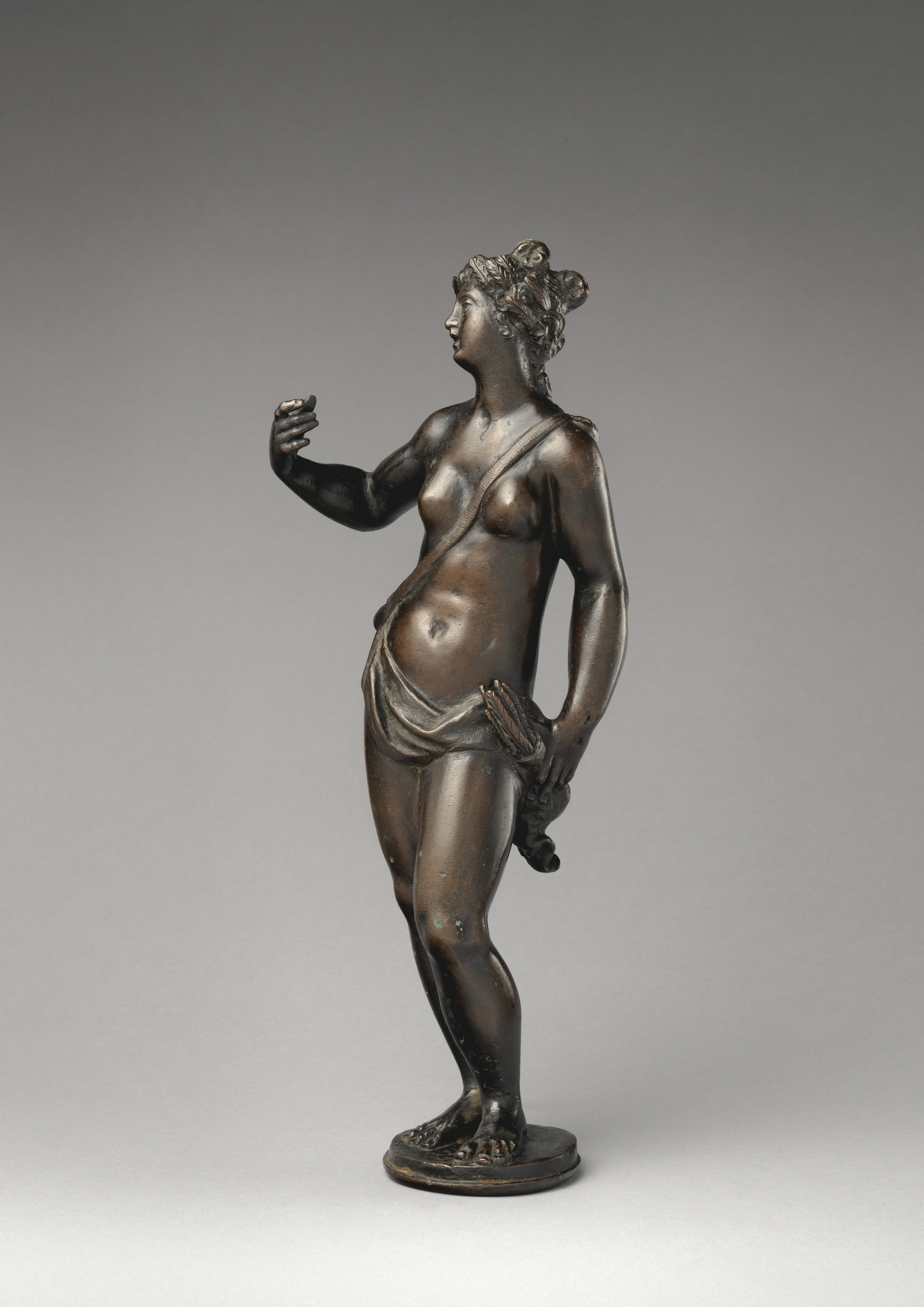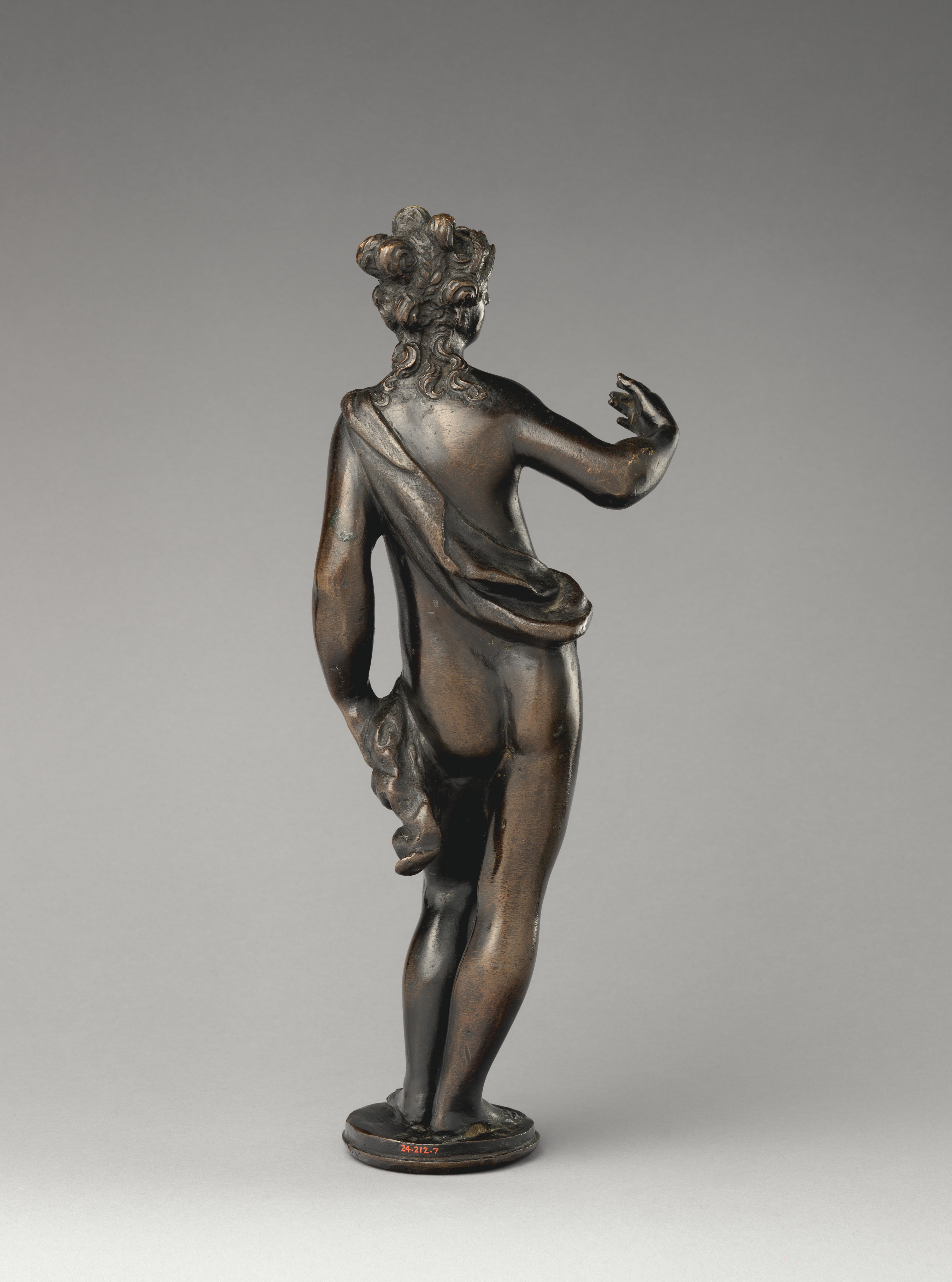Ceres
Probably after Girolamo Campagna Italian
Not on view
The statuette is traditionally considered a representation of the goddess Ceres, but it might also be a generic depiction of Summer, crowned with spikes of wheat and grasping a bunch of the same in her left hand, according to the description given in Cesare Ripa’s Iconologia based on Ovid’s Metamorphosis.[1] She may once have held a torch or mirror in her right hand, attributes also consistent with the allegorical type. The cast is heavy (the arms are solid), with some evident flaws, the most visible being under the neck and at the back of the right foot. The rendering of the drapery is quite coarse, though more attention was paid to the helmet of hair and intertwining leaves. Following an initial attribution to the workshop of Alessandro Vittoria, the figure has been ascribed to the manner of Girolamo Campagna.[2] There are indeed similarities between the posture of our Ceres and that of a Mercury in the Bode-Museum, also possibly after a model by Campagna.[3] The humble facture suggests that the present bronze is a serial work intended as a crowning element of an andiron produced in seventeenth-century Venice.[4]
Footnotes
(For key to shortened references see bibliography in Allen, Italian Renaissance and Baroque Bronzes in The Metropolitan Museum of Art. NY: The Metropolitan Museum of Art, 2022.)
1. Ripa 1593, p. 70 (see also Ripa 1618, pp. 499–500).
2. According to ESDA/OF, in June 1940 its attribution changed from “Probably atelier of Alessandro Vittoria” to “Probably after Girolamo Campagna” based on similarities with the bronze Apollo attributed to Campagna in the Bode-Museum (2800) and discussed in Planiscig 1921, p. 542, fig. 589 (on which see the updated entry in Krahn 2003, pp. 144–47, cat. 36).
3. Bode-Museum, 7301; see Krahn 2003, pp. 148–50, cat. 37.
4. For this type of production, see Motture 2003.
Due to rights restrictions, this image cannot be enlarged, viewed at full screen, or downloaded.
This artwork is meant to be viewed from right to left. Scroll left to view more.





